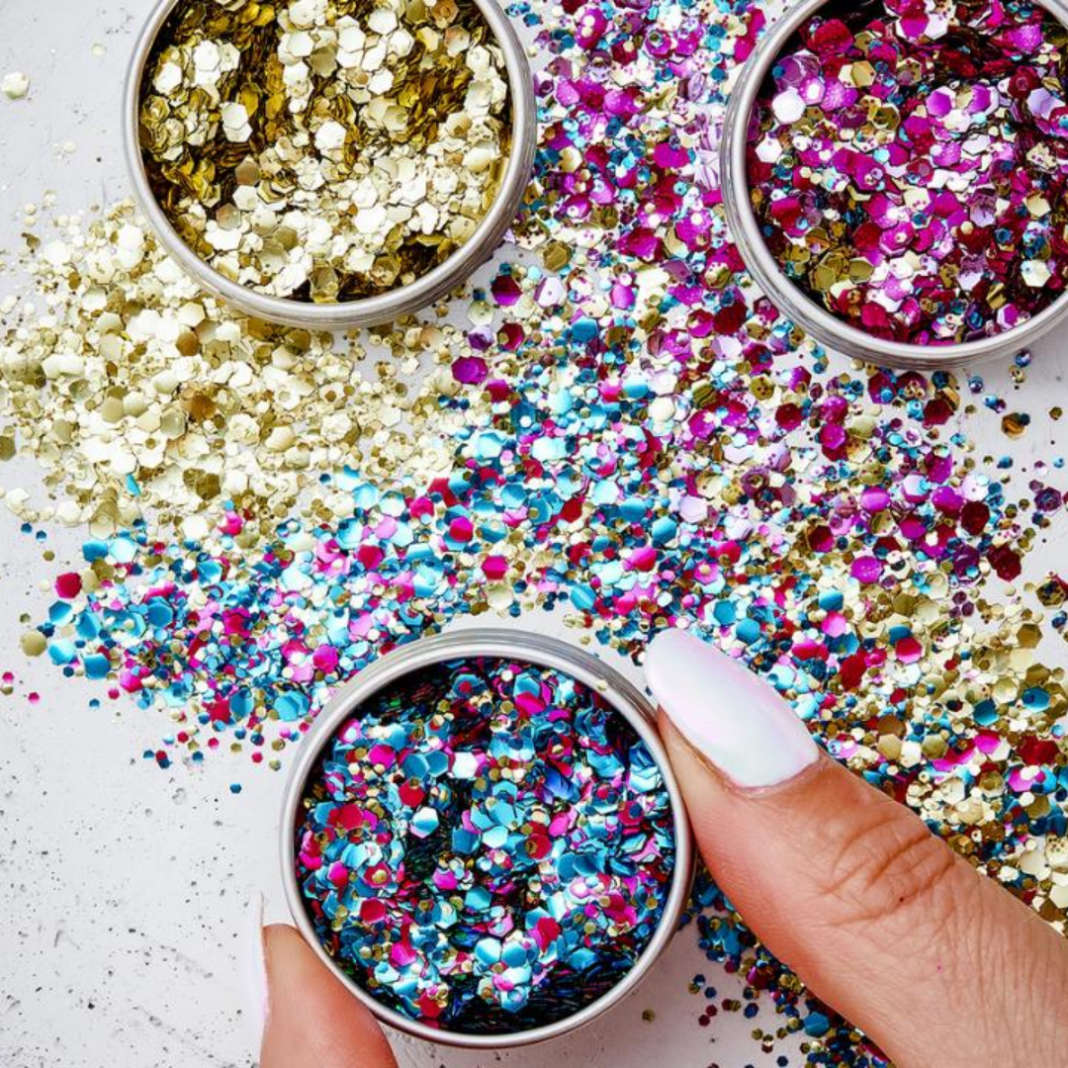A Shiny Glitter Problem Hiding in Plain Sight
Glitter is often seen as something fun and harmless. It adds sparkle to party decorations, makeup, greeting cards, and even clothes. People love using it because it’s bright, colourful, and festive. But behind its pretty appearance, glitter hides a serious environmental problem. What seems like small, cheerful specks can turn into a big mess, especially when it ends up in the ocean.
Glitter is made from plastic, mainly a type called polyethene terephthalate, or PET. It’s a strong plastic, and when combined with metal coatings, it becomes shiny and long-lasting. But once this is escapes into nature, it becomes very hard to clean up. Its tiny size makes it easy to blow away, wash down drains, or get carried into rivers and seas. Eventually, it ends up on beaches or floating in the ocean.
Even worse, glitter is small enough that animals mistake it for food. Fish, turtles, and even tiny creatures like plankton can eat it. Once eaten, it can cause health problems for these animals. And because people eat seafood, glitter, and other microplastics may also end up in our own bodies.
Glitter Isn’t Just Sitting There—It’s Causing Changes
What makes glitter more dangerous than many other plastics is how it behaves in the ocean. Most plastics just float around and slowly break down. But glitter does more than that. Scientists have found that it actually reacts with the ocean’s natural systems.
Climate Change Triggers Unprecedented Coral Bleaching Impacting Oceans
In experiments, researchers made artificial seawater in their labs and added glitter to see what would happen. What they discovered was surprising. The glitter didn’t just float around. It caused minerals to form on its surface very quickly, within minutes. These minerals include things like calcite and aragonite, which are types of calcium carbonate. These are the same materials that ocean animals use to make their shells and skeletons.
This natural process is called biomineralisation. It’s how corals, molluscs, sea urchins, and many other creatures build their hard outer layers. They carefully control this process to make sure their shells are the right shape and strong enough to protect them. But when glitter is involved, it changes how the crystals form. Instead of helping, it disrupts the natural pattern.
Ocean Wealth Unveiled: Axis Bank Role in Fueling India Blue Finance
The glitter acts like a platform where crystals can grow. This makes the process go faster than it should, and it can lead to different types of crystals forming in the wrong way. That’s like trying to follow a recipe, but your ingredients are reacting too quickly and cooking at the wrong temperature. You might still get a cake, but it won’t look or taste the way it’s supposed to.
Breaking Apart and Getting Even Smaller
As the crystals grow on the glitter, they start to push against its layers. Glitter is made of thin sheets, so when pressure builds up from the growing crystals, the glitter starts to crack and break. This makes the glitter fall apart into even smaller pieces, called nanoplastics. These are so tiny that they are almost invisible, and they are even easier for marine life to absorb.
Unlike larger pieces of plastic, nanoplastics can enter tiny organisms, move through the food chain, and end up in many different parts of the ocean ecosystem. Because they are so small, it’s almost impossible to remove them once they’re in the environment.
Not only does this affect animals, but it may also disturb important chemical processes in the ocean. The ocean plays a big role in balancing Earth’s climate. When glitter changes how minerals form in the sea, it might also change how carbon is handled in the ocean. This means glitter isn’t just a pollution problem—it could be messing with global systems that affect all life on Earth.
Glitter may look like harmless sparkle, but it’s more than just decoration. In the ocean, it turns into a kind of chemical troublemaker. It spreads easily, reacts quickly, and causes problems that are hard to fix. What starts as fun on a birthday card could become a lasting threat to ocean life—and to us.





